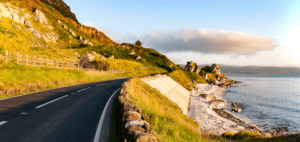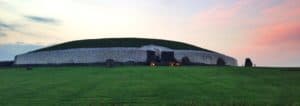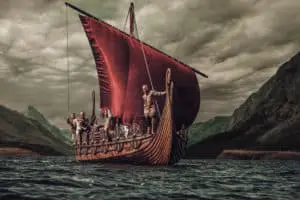Discovering Ireland: County Cavan Outdoor Adventures
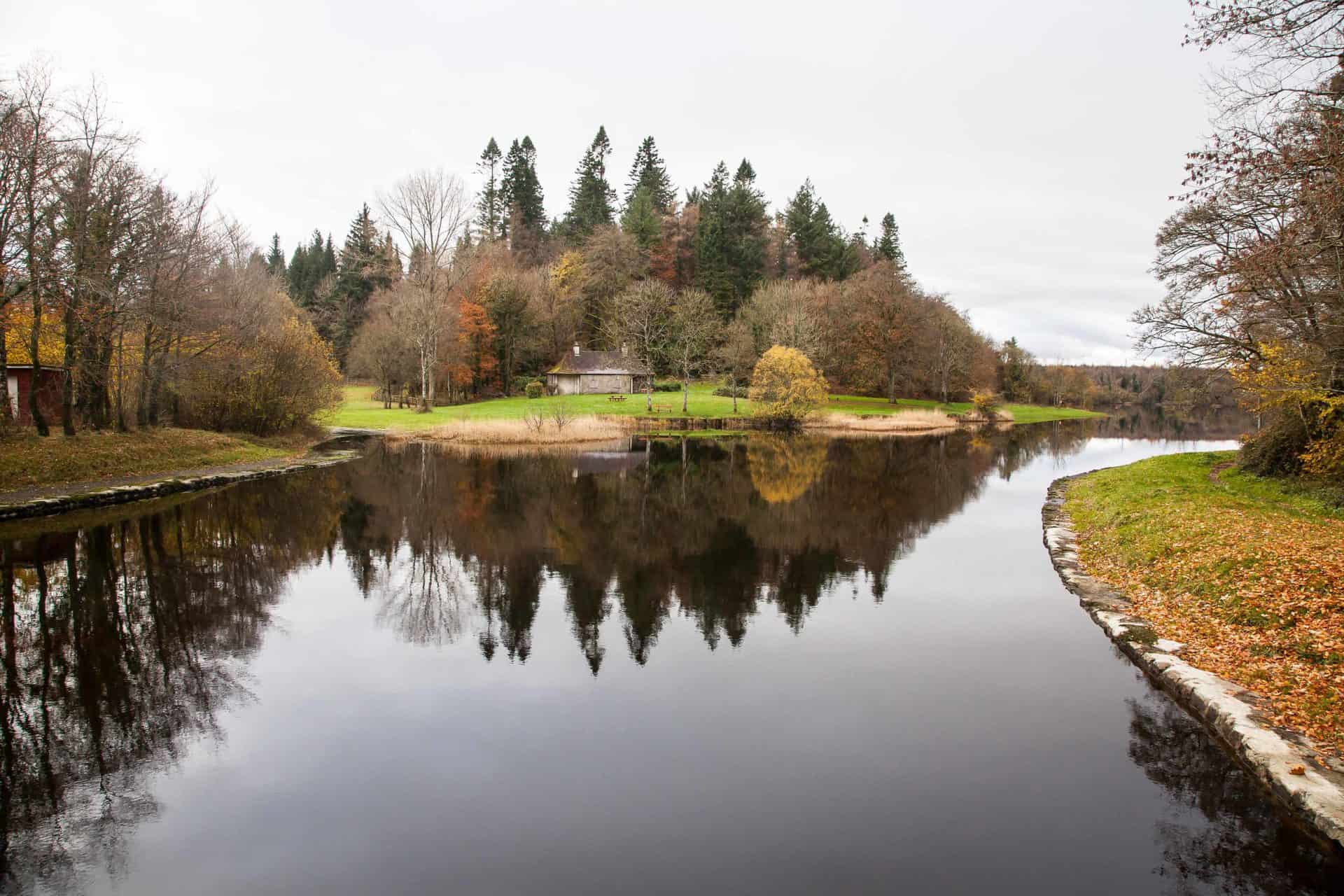
Updated On: April 21, 2024 by Ciaran Connolly
Here at ConnollyCove, we want to let all you travelers know about all the amazing things to do in our little Emerald Isle. For all you hikers and nature lovers, look no further. When it comes to County Cavan’s Countryside, we have got you covered! Here we have everything you need to know about County Cavans, Northern Ireland, and places to hike.
Each of these parks offers everything travelers crave from architecture to forests, from fish to fairies. Anything you can dream of finding out in the Cavan countryside, you will find in one of these many spectacular parks. The places we recommend are Cavan Burren Park, Dún na Rí Forest Park, Killykeen Forest Park, Canal Walk, Castle Lake Walk, Deerpark Forest, Erica’s Fairy Forest, and Mullagh Hill.
Cavan Burren Park: Finest Prehistoric Landscapes
Caven Burren Park contains over ten kilometers of trails, the finest prehistoric landscapes in Ireland, and views you will not want to miss! Caven Burren Park opened in May 2014 and since has been a top stop for nature-lovers worldwide. The park itself is approximately 340 million years old and dates back to the Carboniferous period, back when the whole area was covered by tropical seas. You will find this area of myth, and beauty on the slopes of Cuilcagh Mountain, up the N16 Sligo Road from Black lion, and follow the sign ‘Cavan Burren Park’.
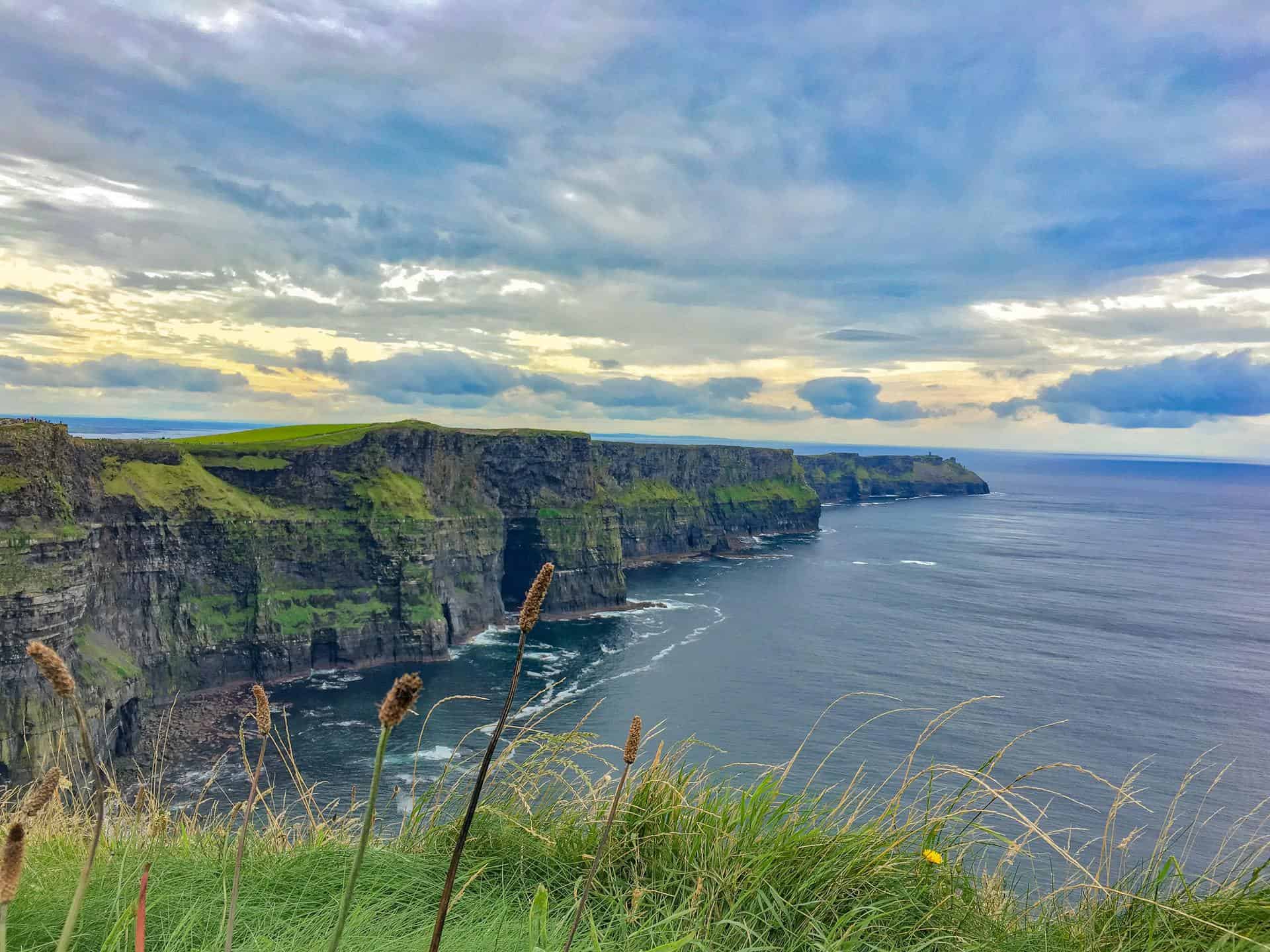
At this park, you will find the amazing Marble Arch Caves Global Geopark. I’m sure you are wondering, what is a geopark? A geopark is an area that is viewed by the United National Educational Scientific and Cultural Organisation (UNESCO) as having amazing geographical heritage, outstanding natural landscape, and showing culture, wildlife, and history.
Cavan Burren Park is full of mythical stories, monuments, tombs, and more. The mythical story surrounding Cavan Burren Park tells us the story of two young giants, Lugh and Lag. These two young giants were competitive both in love and in life. To try and win the affection of the female giant who they both loved, they challenged each other to jump a gorge to see who would take her hand. Lag did not survive and he fell to his death, and that is how Giant’s Leap chasm got its name.
Still not convinced this place is for you? Here are the 4 top marked trails for you to try on your visit: (take a look at this map to understand each trail)
- The Calf House Dolmen Trail – this multi-access trail will take you across the Tullygobbin Wedge Tomb, the Tullygobbin and Lost Valley viewpoints, the Calf-House Dolmen tomb, and much more. This trail promises you 360-degree views across the entire landscape, making sure you won’t miss a thing! This trail is the shortest, taking approximately 35 minutes to complete and only a 25-meter climb.
- The Giant’s Leap Trail – On this trail, you will be able to see where the young giant Lag met his death. This trail is 2.7 kilometers long and you see wee not only the Giant’s Leap Wedge Tomb, the Limelikn, Lost Valley, as well as all the outstanding scenery. This trail will take you approximately 50 minutes to complete and it has only a 35-meter climb.
- The Promontory Fort Trail – this trail is 2.9 kilometers long and will guide you across the Lost Valley, the bog bridge, Promontory Fort, Sinkholes, Relict farm walls, and Glacial Erratics. Choosing this trail means you will see and understand the rich history of the area. This trail will take approximately one hour to complete, and is a little more difficult due to a 65-meter climb.
- The Tullygobbin Lough Trail – this trail is 1.6 kilometers long and will give you an amazing experience of the biodiverse Lough and the surrounding landscape. It will take you approximately 45 minutes to complete, therefore it is not too strenuous for your first adventure in Caven Burren Park. If you follow this trail you are guaranteed to see the amazing Desiccated Sandstone and the Glacial Erratics.
Now, if walking isn’t your thing… this park also offers the opportunity to cycle, fish, canoe, cruise, and even cave in the limestone centers of the earth.
Dún na Rí Forest Park
Dún na Rí Forest Park lies on the border of County Cavan and County Monaghan. While exploring this forest park in County Cavan, you will see many amazing animals, including stoat, hare, mink, rabbit, and otter. This area is a 565-acre beauty that will not disappoint.
What will you find in this amazing forest park? You will be delighted to find the Cabra Estate which was owned by the Pratt family, the dramatic gorge, and the Cabra River. This is an area of folklore within County Cavan, as it is said that Cuchulain camped at this forest park at night when he was defending Ulster against the forces of Maeve.
There are four wonderful walks which you can choose to take here. Each is approximately 1.5 to 2 kilometers long, and each promises to amaze you! You will find some hidden treasures on your adventures, including the Ice House, Toba na Splinne Holy Well, Cromwell’s Bridge, and the ruins of Fleming’s Castle which was originally built in 1801.
Cabra Cottage
Cabra cottage was originally the home of the Pratt family before they resided in Cabra Castle in 1814. Following this, the cottage was used as a shooting lodge. However, in 1955 a lot of the building was destroyed by a fire. You can find this little historical treasure deep in the Dún na Rí Forest Park.
Cabra Village
Between Cromwell’s Bridge and Cabra Cottage, you will find a forest path surrounded by trees – however, before 1760, there was a village here with a flax and corn industry. However, this village was gradually taken apart and the materials were used for building elsewhere.
Cromwell’s bridge
Cromwell’s bridge at Dún na Rí Forest Park was built during the 12th Century Norman invasion. It is believed that the Cromwells crossed this bridge to attack the O’Reilly Castle which was located at Muff. From this bridge, you will see views of the river and trees, an amazing place to be ‘one with nature.
Fleming’s Castle
Fleming’s Castle was built in 1607 by Gerald Fleming above a deep gorge. Before Gerald Fleming built this castle, a previous castle was built at the Cabra by Hugh de Lacy who was the great Norman builder of castles.
Ice House
Back before electricity and refrigerators, people created Ice Houses to store ice to be used throughout the summer months. This stone-lined pit is shaded from direct sunlight, it was built around the 16th Century and was used by the inhabitants of Cabra Cottage.
Old Military Barracks
This ruin should be at the top of your list of things to see at Dún na Rí Forest Park – you will find this ruin between the carpark and Fleming’s castle. These ruins were originally built by the Pratt family and were used by Colonel Joseph Pratt as barracks in the 1800s.
Sarah’s Well
This well was used by the Pratt family as their water source due to its coldness and purity. There was water supply on the land, but they always sourced their water from this well.
Wishing Well
It is unknown how this Well came to be, but it has been used for many centuries. It is assumed to have been a Holy Well. Holy Well’s are said to have been made to flow by the magic of a Saint. Due to this, it is possible that throughout the past this Well was used for healing. This old Irish name for this well was Tobar na Splinne – the well of the cliff or ledge.
Killykeen Forest Park
Killykeen Forest Park is arguably the most scenic area within County Cavan, and it is roughly five miles outside Cavan Town. These 600 acres of beauty will not disappoint travelers looking for amazing scenery out in the Cavan countryside. This forest park lies on the shore of Lough Oughter and part of the River Erne waterway. You will enjoy the amazing views of the lake and waterways by following any of the many signposted walks along the shore and through the woods.
Gartnanoul Court Tomb: An Ancient Tomb in County Cavan
Only the ruins remain from this 5000-year-old court tomb, and it is full of magical history. These court tombs were usually flat-roofed buildings that were used as graves and surrounded by a small courtyard. It is said that they were used as graves for important members of society. However, these ones in Killykeen Forest Park are unusual as they are roughly 12-meters apart in comparison to the usual ones which usually share a large stone at the rear of the structure. When visiting this forest park, you should definitely explore these ancient ruins.
Lough Oughter
Lough Oughter is the pride and joy of Killykeen Forest Park – this lough promises outstanding scenic views while you enjoy your hike through the forest trails. Lough Oughter is also a very popular spot for fishermen looking for pike, bream, and perch. There are many more wild animals to be spotted here at Lough Oughter such as waterfowls, mallards, tufted ducks, wigeons, and pochards.
Oughter Castle
The number one spot here in Killykeen Forest Park is the Romantic period Oughter Castle which stands on an island on the lake. This is a place of stunning beauty and architecture. This ruin dates back to the 1200s and it was originally built by the O’Reilly clan who resided here for over 300 years. This building was their home, and also their fort against their enemies. This castle was taken by the English clan in the 17th Century by Captain Hugh Culme and was taken back by the Irish during a rebellion in 1641. This castle has been a ruin since 1653 when it was raided by Cromwell.
You can visit this castle ruin by hiring a boat.
Canal Walk
The canal loop walk can be found in Ballyconnell in County Cavan. It is one of the most relaxing and scenic routes to walk in County Cavan. This loop will take you past paths, woodland, and sandy roads. It will allow you to overlook the Woodford River and the Annagh Lough Woods. Throughout you will discover many wildlife species.
It is a short two-hour path which is six kilometers long and starts at the Ballyconnell Bridge car park. What makes this path even better is that it is canine-friendly! So you can bring your furry best friend along. Ballyconnell is also renowned for its fishing locations, golf courses, and sites of archaeological interest. You will find the Ballyhugh promontory fort, Killycluggin, and the Killycluggin Stone. This stone dates back to the Iron Age, however here now sits a replica while the original is on display at the Irish National Museum.
The entire route is split into four parts to help you find your way, you can follow it like so:
A – B
This route begins at the entrance to the carpark. From here, you simply follow the arrows through the park and onto the stunning bank of the Woodford River. From here the amazing journey begins. Continuing, after 100 meters you will find a metal footbridge – this footbridge marks the beginning of the Canal Loop Walk. You will end the loop at this metal gate.
B – C
Following the riverbank, you continue for one kilometer before entering the green Annagh Lough Wood.
C – D
You will walk through these stunning woods for two kilometers and then come across the sandy road which takes you past a farm. The loop takes a sudden turn right through a metal gate.
D – A
Follow the final lane down a hill for 100 meters to reach another metal gate. You will then return to your starting location.
Castle Lake Walk
You will find the Castle Lake walk at Bailieborough in County Cavan. Bailieborough translates to Coill a Chollaigh in Irish, meaning forest of the boar. Luckily, you will not find any boars here in this town. This walk is also a loop shape and will take you through some spectacular views of the lake and countryside. The path is all forest trails with some gentle climbing, so, be sure to wear appropriate footwear! This loop is shorter than the Canal Walk Loop, it is three kilometers long and will take approximately 90 minutes to complete.
This beautiful lake and forest walk begins at the lake carpark and will take you past many interesting sites. These historical sites include a memorial to those who died at Rabel Hill in 1798, the graves of the Marist brothers who occupied Bailieborough Castle, and the remains of Bailieborough Castle. This castle was originally built around 1630 by William Bailie and was demolished in the 1940s.
This three-kilometer route is split into three parts to help guide you around the loop, you can find the map here to help you understand the route.
A – B
Starting at the carpark at Castle Lake you will follow the blue arrows along a forest path on the southern end of the lake. Here, you will take in stunning views of the lake guaranteeing a relaxing beginning to your journey. This continues for one kilometer.
B – C
Following on from this, there is a gentle climb which offers stunning views from above Castle Lake and the countryside. Descending again, you will read a wooden footbridge that crosses the river, offering you amazing views above the river.
C- A
Soon after crossing the footbridge, you only have 600 meters until you are back at the beginning of this stunning trail.
There are a variety of other routes you can take to explore all this stunning forest can offer. This trail can be altered and made into a five to six-kilometer loop.
Deerpark Forest Walk
Deerpark Forest Walk is found outside Virginia in County Cavan. This route is lined beautifully with trees and passes the Virginia Golf Club and Lough Ramor. A large proportion of this forest is managed for biodiversity. This forest also offers three designated family-friendly routes for all to enjoy.
The first route is approximately one kilometer and shows stunning scenery of the river. The second trail is the Golden Heritage Trail which is approximately two kilometers long. The Golden Heritage Trail will show you some amazing sites such as Toberpatrick well, Lady’s cottage, Castle boathouse, and the metal and stone bridges. The third, which is perfect for older kids, is the Lough Lamir loop which is approximately four kilometers long and takes you past the river and shores of the lough.
Erica’s Fairy Forest | Do you believe in Fairies?
Erica’s fairy forest is dedicated in memory of Erica Ní Draighneain. She died in 2016 and this forest was built by her parents in her memory, featuring many magical stories from fairytales that she loved. This amazing forest can be found at Fairgreen in County Cavan.
If you don’t believe in magic or fairytales, after visiting this stunning place you will leave without any doubt. It is an enchanting place filled with stories and magic. It is the perfect place to wind down and pretend to be a child again with a big imagination, and also perfect to bring kids to enhance their imagination and fairytale beliefs. This enchanted woodland walk is sure to bring both smiles and tears who those who visit.
There are always events and changes being made to this enchanted little place, therefore keep up to date with it via Erica’s Fairy Forest Facebook page. If in County Cavan you should make visiting this enchanted forest of beauty and mystery your top priority.
Mullagh Hill
Mullagh hill rises 684 feet above its stunning lake. This is the perfect location for outdoorsy people who want to climb and view amazing scenery. At the top of this hill, you will discover a burial mound. It is thought that the hill and district called Mullach Laoighill gets its name from a chief who was buried here. This grave was supposedly discovered when there was a search for treasure, however, it was never found who opened this grave.
The walk up this hill is approximately two kilometers long and takes 30 minutes to climb. Starting at the carpark beside Mullagh Lake, and following the path you are guaranteed to be stunned by the beauty, panoramic views, and gentle landscapes of County Cavan and Monaghan.
Mullagh is most famous for its association with Saint Killian who was born there in 640AD, and was later martyred in Bavaria in 689AD. He was born into a noble family and was educated in County Cork and County Kerry. He became the Patron Saint of Tourism, later traveled to Rome to meet the Pope, and finally settled in a German town called Wurzberg.
Mullagh Hill is, therefore, a stunning place filled with history and serenity. It is a short but steep walk with an amazing view which is worth the hard work.
Have you ever visited County Cavan? Have you ever visited these outdoor places of outstanding beauty and interest?
Let us know in the comments below!


